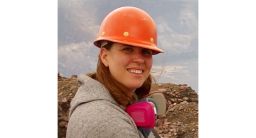Editor’s Note: Einat Lev, a volcanologist, is an assistant research professor at the Lamont-Doherty Earth Observatory at Columbia University. Her research, funded by the National Science Foundation, is focused on lava flow dynamics at different volcanoes, including in Hawaii. The opinions expressed in this commentary are solely those of the author.
Everyone has been looking at Kilauea volcano’s lava flows. Sure, a wall of molten rock consuming a car is quite the sight. But as we all focus on the damage at Leilani Estates, we shouldn’t forget that volcanoes are complex systems, where everything is connected. New warnings about flying ballistic blocks and sinking lava lakes help us remember!

This event – beautiful, destructive, frightening – also presents a moment for all of us to appreciate the immense power of the forces that never cease shaping our planet. We are reminded by Kilauea to stay humble in the face of nature. And for volcanologists, the eruption is an opportunity to share with the public what we know about how these massive, intricate systems work.
Indeed, as lava is spitting and oozing along Kilauea’s East Rift Zone, there is action miles away at the top of the volcano. The pressure dropped below the lava lake at Kilauea’s summit crater, Halema’umau’, and lake levels have reached the lowest level since it formed back in 2008.
Scientists at the US Geological Survey’s Hawaii Volcano Observatory worry that if the lava lake drops too far, groundwater will seep into the conduit – the plumbing in this vast, interconnected system – between the summit and the East Rift Zone.
Recently active volcanoes
Water and hot rocks and magma are not a good combination – they create steam, and steam causes explosions. Such explosions can release tall clouds of ash and toxic gas and throw rocks – so called “ballistic blocks” – as far as eight football field lengths.
This concern led to the latest warning from the Hawaii Volcano Observatory about the risk of explosions at the summit.
It’s happened before. In April and May of 1924, the lava lake filling Halema’uma’u crater drained. The draining followed an intense sequence of earthquakes, suggesting that the magma was moving away from the summit reservoir. Once the lake fell below the height of the local water table, steam-driven explosions began.
Photographs from that time show the ash cloud rising miles into the sky. In fact, it was tall enough to reach the jet stream, which propelled the ash more than 10 miles away from the crater. The Hawaii Volcano Observatory website has a wonderful summary of the 1924 explosions, including magnificent historic photos.
Rocks thrown up by a steam explosion are a big hazard. Some weigh as much as 8 tons! (That’s about 4 pickup trucks). Back in 1924, one person was hit and killed by a ballistic rock. Even the superintendent of the park at the time, Thomas Boles, was injured as he tried to escape one of these lava bombs.
In addition to rocks, ash is very hazardous to human health, as it can be a serious irritant to the eyes, skin, and the respiratory system.
Therefore, in the coming weeks it will be critical to follow the updates from the USGS and Civil Defense regarding the status of Kilauea, not only at the lava flow field down at Leilani Estates, but also at the summit. Once again, nature has provided us with a demonstration of its forces. We should seize this opportunity to learn from it as much as we can, together.






























